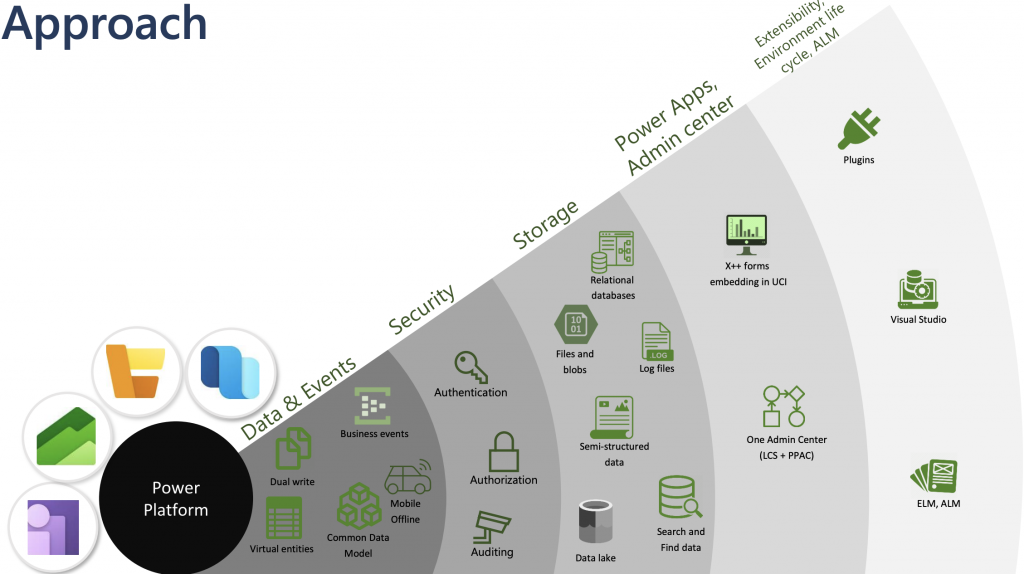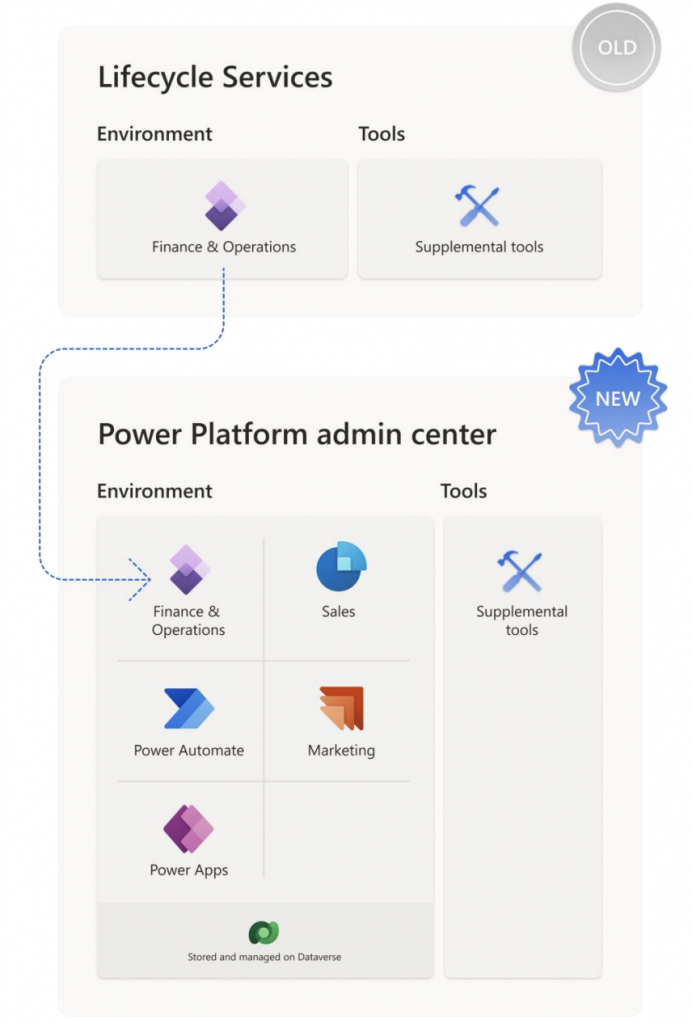One Dynamics One Platform has become one of the biggest investment areas for the MS team as it is looking forward to converging all Dynamics 365 apps to a single Dynamics platform. This is a new vision where all personas such as administrators, user developers, analysts, etc. have one experience across all the Dynamics 365 apps.
Let’s dive in.
What’s the Objective?
If we look at the history of Dynamics applications, we will see that each one has had its own evolution. For example, Finance and Operations has gone through its own journey, starting from IBM Axapta to where it is today. Similarly, Microsoft Dynamics Sales, Marketing, etc. did the same journey.
Nevertheless, these apps have never been interconnected, even though they are all part of the Dynamics umbrella. One Dynamics One Platform is the acknowledgment of the gap – Dynamics 365 applications should be talking to each other out of the box. Hence, Microsoft started this path around three years ago with the advent of Dual-Write.
The prime motivation here is letting users & partners focus on core skills and capabilities, enhancing business processes, and reducing time and resources on developing communication between Dynamics apps.
For example, administrators spend lots of time in LCS to manage Finance and Operations as well as on the Power Platform admin center to manage Dynamics applications. Meaning, there is clearly an opportunity for Microsoft to help administrators enhance their daily workflow, making it more productive and efficient. The same goes for developers, analysts, and so on.
Approach
Convergence needs to happen throughout the technology stack of Finance and Operations and Power Platform, and the layers below need to come together at every slice of the tech stack.

So convergence is not going to be restricted to one specific area of the tech stack, but we should be expecting the entire stack to become together because only then we can enable experiences across UI, runtime, admin, developer, and other layers.
This is a technical representation of how we should expect convergence to happen and what changes we should expect as part of one Dynamics One Platform.
Key Principles
It is important for us to establish a key set of principles since the journey of One Dynamics One Platform is still ongoing. And, it is quite easy to get lost in the details without core principles to guide us around ODOP and how to execute it.
Principle one is to be opportunistic and don`t rewrite. It is basically stressing the fact that Platform Convergence is not happening for the sake of convergence. Platform Convergence is a very methodical, thoughtful approach with an expectation to not require what is already existing: investments & applications must continue to work as the platform is converging and modernizing.
Principle two is an acknowledgment that One Dynamics One Platform is going to be a journey. It has already been for three years and still will be a journey for another three to five years. It is a crawl, walk, and run approach – it takes time to work through each scenario and converge, or enable convergence capabilities for that scenario.
Principle three states that, although we should not rewire any of the existing applications (which is principle one), we should understand what is it to be added to the platform, where the platform goes, and how it converges. Thus, we will be more cognizant to understand what is available from a convergence perspective.
Last but not least, principle four is about X++. It has been a powerful development toolset for several years and X++ will continue to be that going forward. The way we should think about platform convergence and One Dynamics One Platform is that it gives opportunities for a development community as well as more options to build cross-platform applications.
In addition to X++, developers will have more choices to pick and choose from, based on what scenarios are being customized for and what toolset is going to be useful and effective. They can choose and use that for their implementation.
One Admin
Admins have been screaming for a while about the job and how it is becoming more complex, time-consuming, and error-prone – especially for admins that are using both workloads in LCS Finance and Operations ERP and Power Platform workloads in the Power Platform admin center.

As we start this multi-year journey of admin unification to make admins` jobs, life, and workflow easier – there are concepts and changes that we need to think about around Finance and Operations.
We’ve always thought about F&O as an environment – you don’t install F&O into an environment, but rather deploy a sandbox or production environment in your LCS. But that’s not really how things work in Power Platform Admin Center – the environment is more of a collection or container.
That’s really where we MS team want to get F&O plugged into in terms of a richer ecosystem, adding more flexibility. It also means further harmonization is required for lifecycle operations as well as things like environment copy, backup, and restore.
The goal of the investment from the Dynamics team’s perspective is to have a unified admin experience – one place for the admin to go and utilize the Power Platform admin center, and one rich Power Platform API to power it all.



